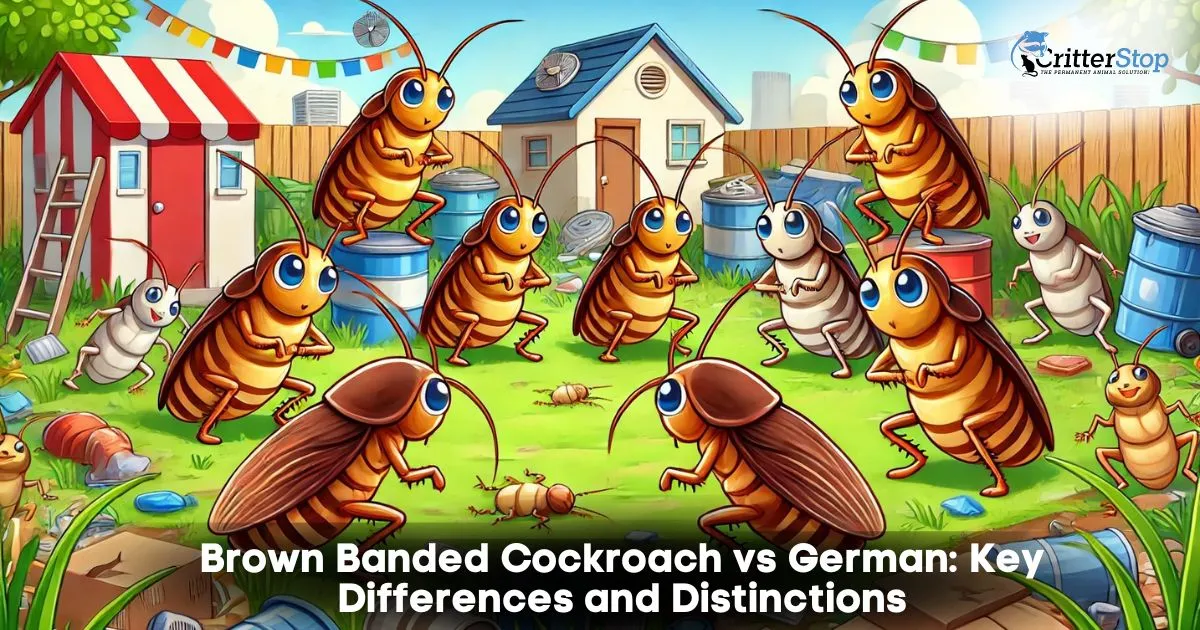
When it comes to pest control, distinguishing between a brown banded cockroach and a German cockroach is essential for effective management. The brown-banded cockroach is generally less troublesome than the German cockroach, known for its rapid breeding and potential to cause significant infestations. Understanding the differences between these two species can help implement the right elimination strategies.
Both species exhibit distinct physical characteristics that make identification easier. The brown banded cockroach has light brown coloration with two prominent bands across its wings, while the German cockroach features a tan or light brown body with two dark stripes running down its back. Knowing these details can ensure a more accurate identification and targeted approach to pest control.
Finally, it is crucial to recognize their behavior and preferred habitats. While the German cockroach often thrives in kitchens and bathrooms, the brown banded variety may be found in drier areas of a home. This knowledge is invaluable for homeowners who want to manage these pests effectively.
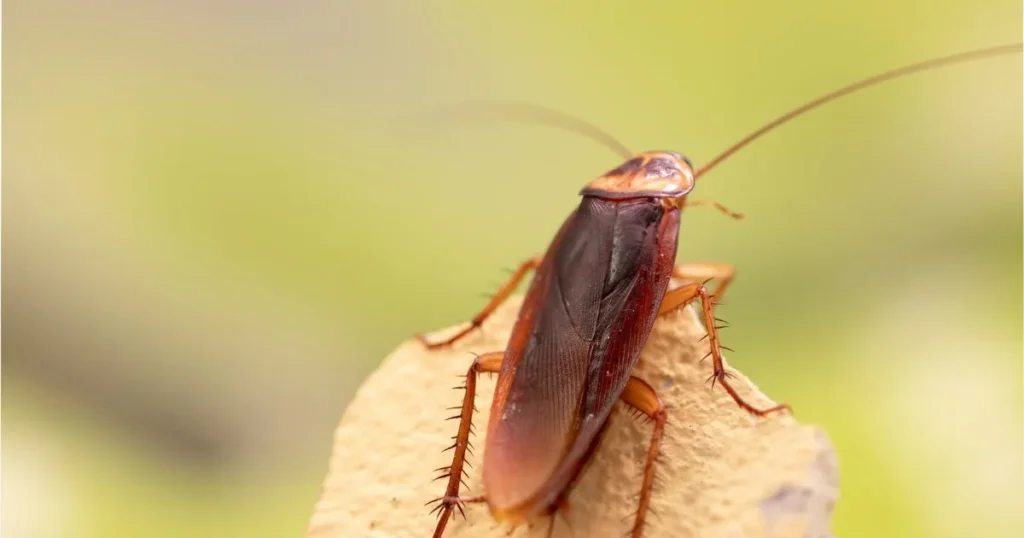
Brown-banded and German cockroaches exhibit distinct characteristics that aid in their identification. Understanding these traits is essential for proper pest management.
The German cockroach (Blattella germanica) is light brown or tan with two dark stripes running lengthwise on its pronotum. Adults measure around 1.1 to 1.6 cm (0.5 to 0.6 inches) in length. Their slender body allows for easy movement through tight spaces.
In contrast, the brown-banded cockroach (Supella longipalpa) has a more robust build and is darker brown with distinct light-colored bands across its wings and abdomen. Adults typically grow to about 1.3 to 1.6 cm (0.5 to 0.65 inches). The brown-banded cockroach's wings do not cover the entire abdomen, which is a notable difference when identifying the two species.
German cockroaches prefer warm environments, and they are commonly found in homes, restaurants, and other human-inhabited spaces. They thrive in kitchens and bathrooms where food and moisture are readily available.
Brown-banded cockroaches, on the other hand, can adapt to drier conditions. They are often found in higher building locations, such as on ceilings or upper walls. This species also prefers warmer areas, making it more common in appliances and furniture.
Both species can reproduce rapidly, leading to infestations that are challenging to manage without proper identification and targeted control measures.
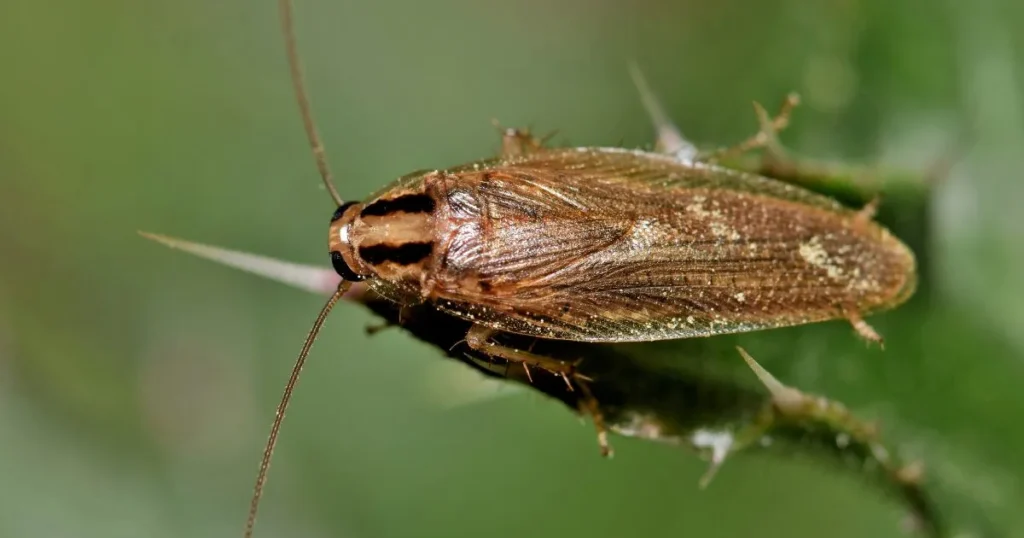
The behavior and lifestyle of brown-banded and German cockroaches exhibit distinct differences crucial for identifying and understanding their impact as pests. Their reproductive patterns and dietary preferences contribute significantly to their survival in human environments.
Brown-banded cockroaches reproduce quickly. A female can produce 14 to 18 eggs per ootheca, which she carries for approximately 30 days before depositing them in warm, protected locations. This cycle allows them to proliferate quickly, especially in favorable conditions.
In contrast, the German cockroach has a similar reproductive output, producing approximately 30 to 40 eggs per egg case. The female German cockroach also carries the egg case until the eggs are ready to hatch, usually within about 28 days. Both species have high reproductive potential, yet the German cockroach’s prolific breeding makes it particularly challenging to control in infested areas.
Brown-banded cockroaches prefer starchy materials, making them a threat to stored food items. They often feed on paper, glue, and even book bindings, alongside more typical organic matter. Their flexible diet allows them to survive on limited resources.
German cockroaches are more opportunistic feeders. They are attracted to a variety of food sources including grease, crumbs, and any decaying organic material. They have a strong preference for carbohydrates and protein-rich foods. Both species thrive in kitchen environments but may exhibit different feeding behaviors based on their dietary preferences.
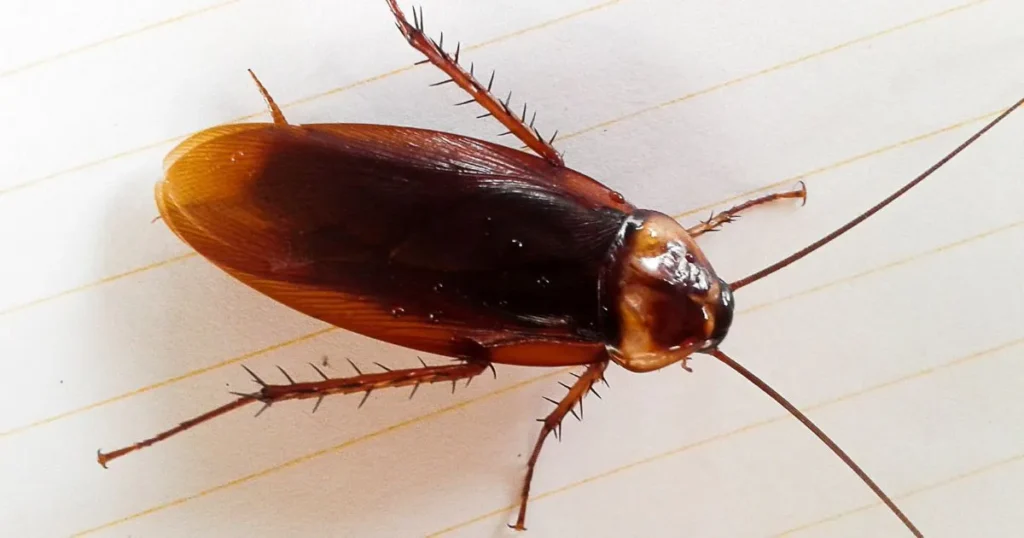
Effective prevention and control methods are essential for managing brown-banded and German cockroaches. Focusing on sanitation, exclusion techniques, and insecticide use can significantly reduce infestations.
Sanitation plays a crucial role in preventing cockroach infestations. Both brown-banded and German cockroaches thrive in dirty environments with ample food and shelter. Maintaining a clean living space involves:
Exclusion is equally important; it ensures that these pests cannot enter living spaces. Potential entry points include:
By sealing these openings, individuals can effectively reduce the chances of an infestation. Critter Stop can help with ongoing issues. They have a fantastic reputation and online customer reviews because they provide high-quality work and excellent customer service.
When sanitation and exclusion methods are not enough, insecticides can be an effective control measure for both brown-banded and German cockroaches. Several types of insecticides could be used, including:
When using insecticides, following label instructions carefully to ensure safety in residential spaces is essential. For persistent issues, consulting with a pest control professional is advisable. Critter Stop offers expertise in identifying the right treatment options. By calling (214) 234-2616, individuals can schedule a free inspection to address specific pest concerns efficiently.
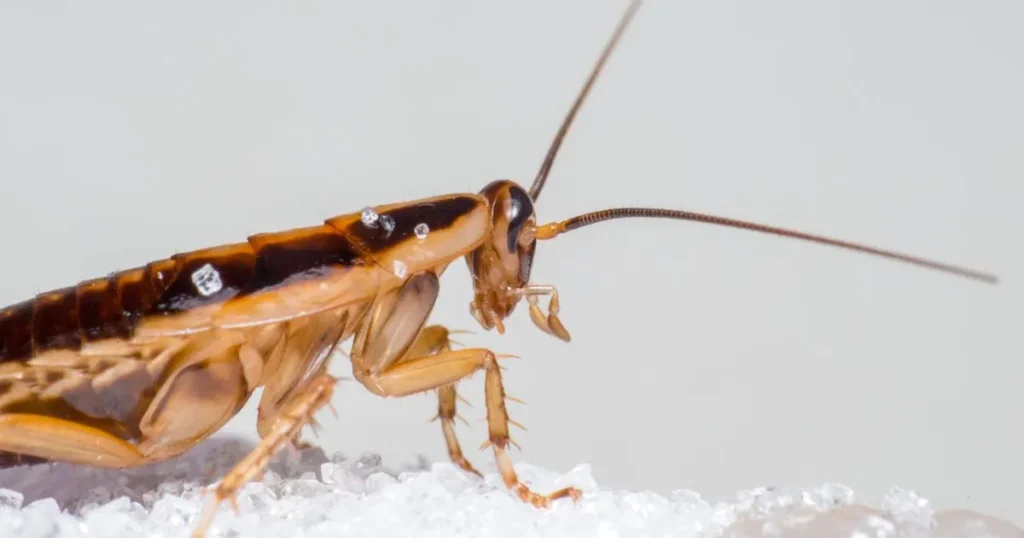
This section addresses common inquiries about the brown banded cockroach and the German cockroach. Readers will find detailed comparisons on their appearance, habitat, elimination challenges, control methods, behavior, breeding cycles, health risks, and prevalence in homes.
The brown banded cockroach has distinctive brown bands across its wings and lighter, more slender body. In contrast, the German cockroach is darker and has two prominent black stripes running lengthwise on its thorax.
Brown banded cockroaches prefer warmer, drier areas such as storage rooms and furniture, while German cockroaches favor moist environments like kitchens and bathrooms. This difference significantly influences their locations within homes.
German cockroaches are often more difficult to eliminate due to their faster reproduction rates and preference for hiding spots close to food sources. Brown banded cockroaches, while less prolific, can still pose a challenge if not managed properly.
Effective control of German cockroaches often involves baits, traps, and professional extermination services. In contrast, brown-banded cockroaches can be managed through sanitation efforts, exclusion techniques, and targeted pesticide treatments.
German cockroaches are more social and tend to cluster, leading to larger infestations in specific areas. Brown banded cockroaches, being more solitary, may have a more dispersed infestation pattern.
German cockroaches reproduce more quickly, with females producing numerous egg cases throughout their lifespan. Brown banded cockroaches have a slower breeding cycle, producing fewer egg cases, which affects their population dynamics.
Both types of cockroaches can carry pathogens, but German cockroaches are particularly associated with allergies and asthma due to their droppings and body parts. Brown-banded cockroaches may pose less risk but still contaminate food and surfaces.
German cockroaches are generally more prevalent in homes, especially in urban areas. Brown banded cockroaches, while common, are often found less frequently in residential settings.
Visit our Critter Library and learn more about our furry friends